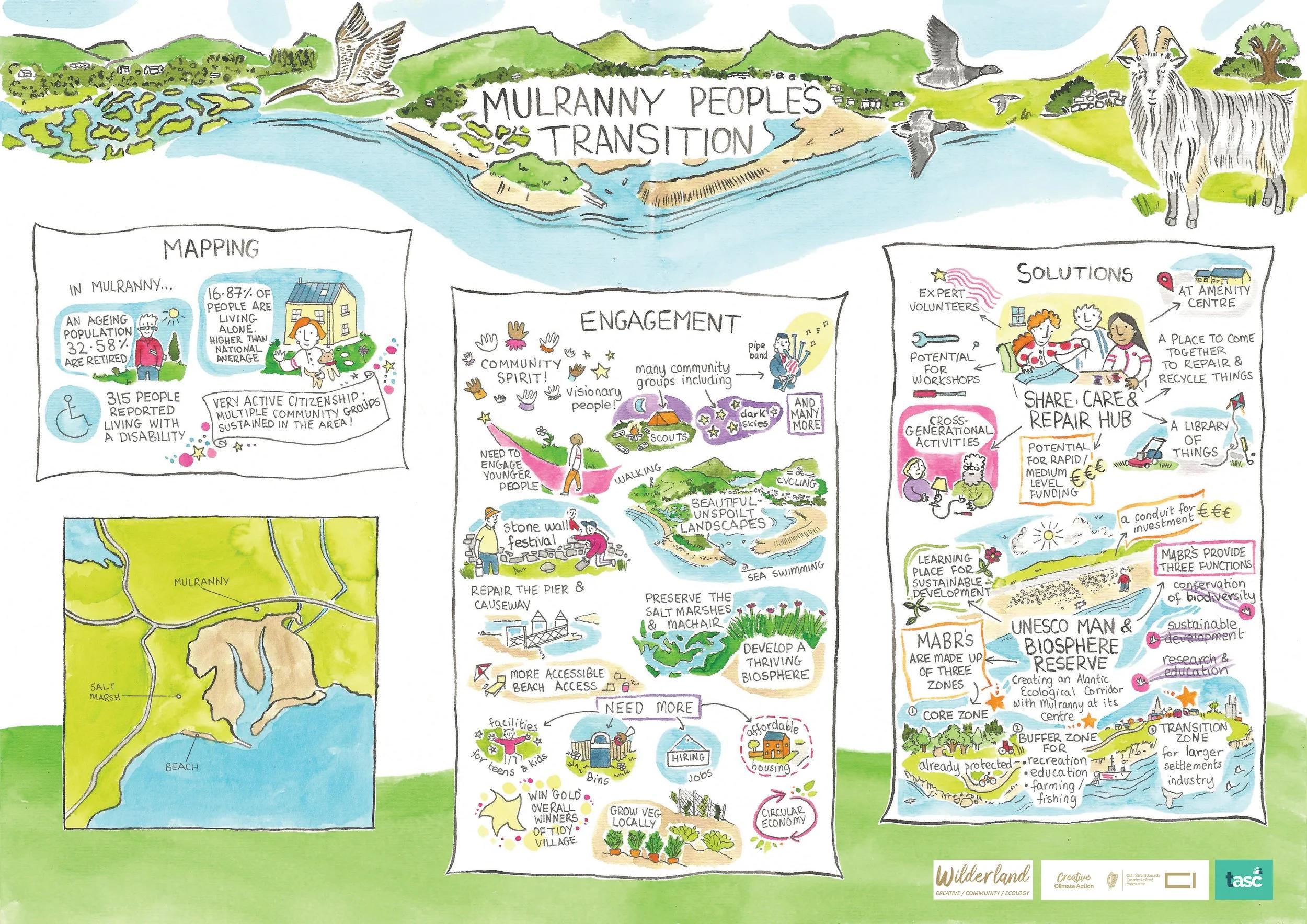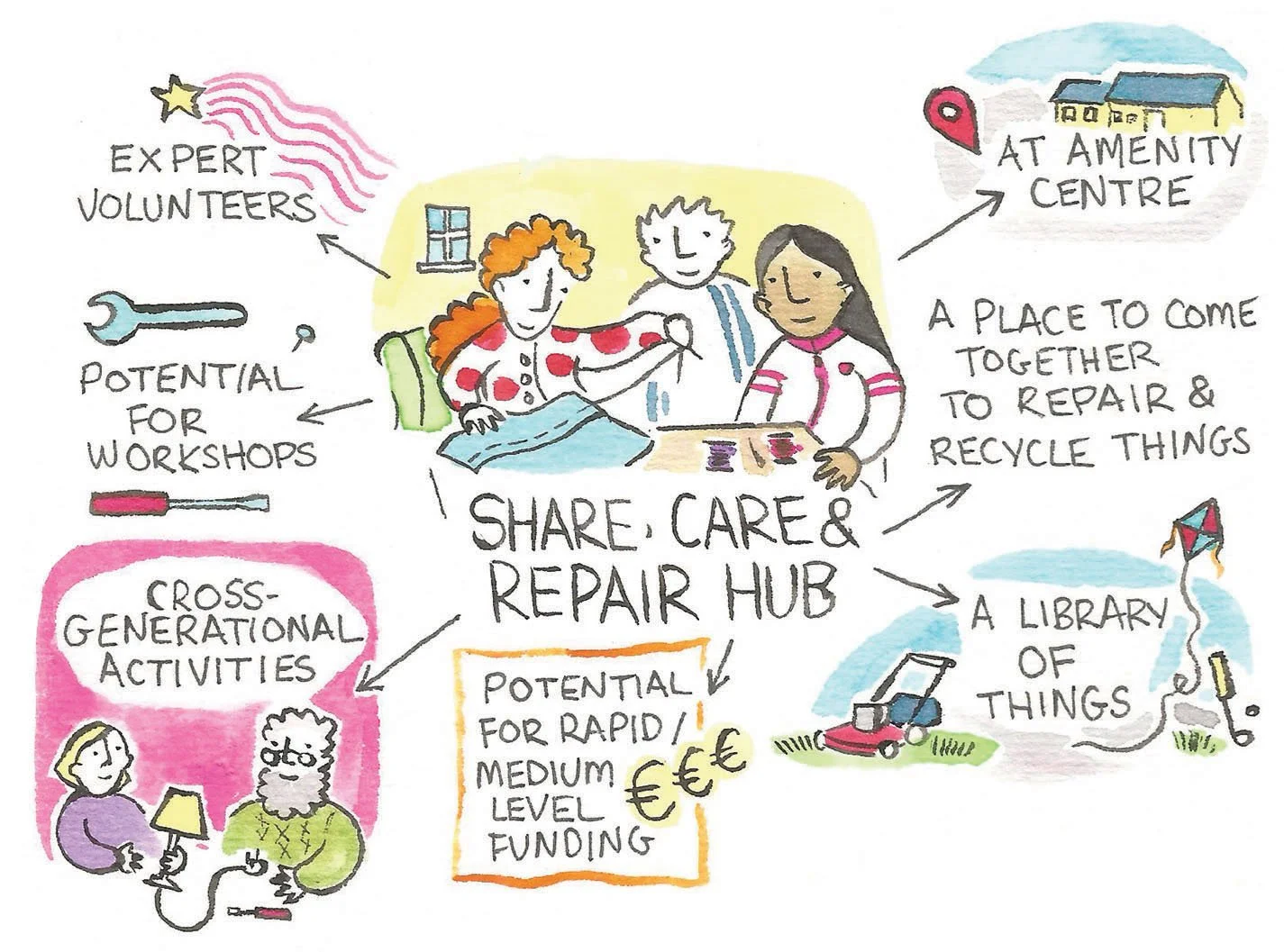
The People’s Transition in Mulranny
The Mulranny People’s Transition began in August 2024. The intention of the project was to listen to and learn from the community’s needs and abilities and then attempt to design a number of climate solutions that would benefit the community and address a number of the main local development priorities. The project had three phases: a mapping phase, a community engagement phase, and a solutions phase.
The report has been published in partnership with the Wilderland public art and community ecology project, funded by the Creative Climate Action fund, an initiative from the Creative Ireland Programme.
Project phases
-
The mapping phase aimed to build a picture of the community of Mulranny, outlining a geographical scope for the project that represents the people who live there. The key was understanding how people within the community could be included by assessing who was at the greatest risk of being excluded. In addition to demographics and circumstances, the area was studied to understand the distribution of institutions and organisations, such as schools, services and community groups, that play a significant role in the locality.
-
The second phase, Community Engagement, began in the autumn of 2024 following the initial mapping phase. During this stage, the TASC researcher visited the village to meet key local institutions and community members, laying the groundwork for deeper engagement. A broad survey was then conducted to gain an initial understanding of local opinions and ensure the inclusion of under-represented voices. In February 2025, the researcher spent a week in Mulranny meeting locals, conducting interviews, and holding two community conversations that enabled residents to reflect on both the challenges facing the village and their collective strengths. The engagement phase concluded with a collective visioning workshop in April 2025, where community members came together to develop a shared vision for the future, created by the community for the community. Across these activities, participation steadily expanded and representation deepened, providing as true a reflection of the community as possible. Thanks to the commitment of local groups and individuals — including the use of an interpreter to involve the Ukrainian community — we were able to overcome barriers to participation and gather valuable insights into community needs, priorities, and strengths.
-
Building on the community engagement phase, TASC collaborated with local residents to identify viable climate solutions that address local needs, build on community strengths and capabilities, and align with the shared vision for the future. Through a process of reflection and deliberation, the community refined their ideas into two key community-led solutions for climate justice to take forward.
Co-Creation of Solutions
‘Share, Care & Repair’ Programme
A short to medium-term, community-driven initiative designed to build local capacity to engage with and benefit from climate action, while maintaining the momentum of the People’s Transition process.
Recognition of the wider area as a UNESCO Man and Biosphere Reserve
A more ambitious, long-term goal that serves as a guiding “way-marker” for achieving many of the broader solutions co-envisioned during the collective visioning workshops.
Mulranny is the county’s chosen decarbonisation zone, an area that Mayo County Council has designated a demonstrator site to illustrate the potential of climate action. We hope that the findings from this research contribute to shaping faster and fairer climate action that leaves no one behind as Mayo County Council continue to undertake innovative approaches to climate action in the area.




